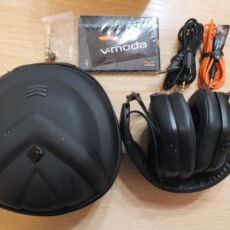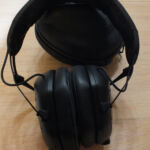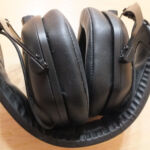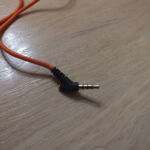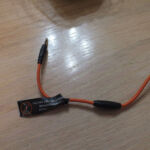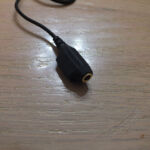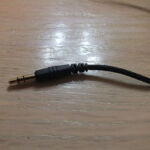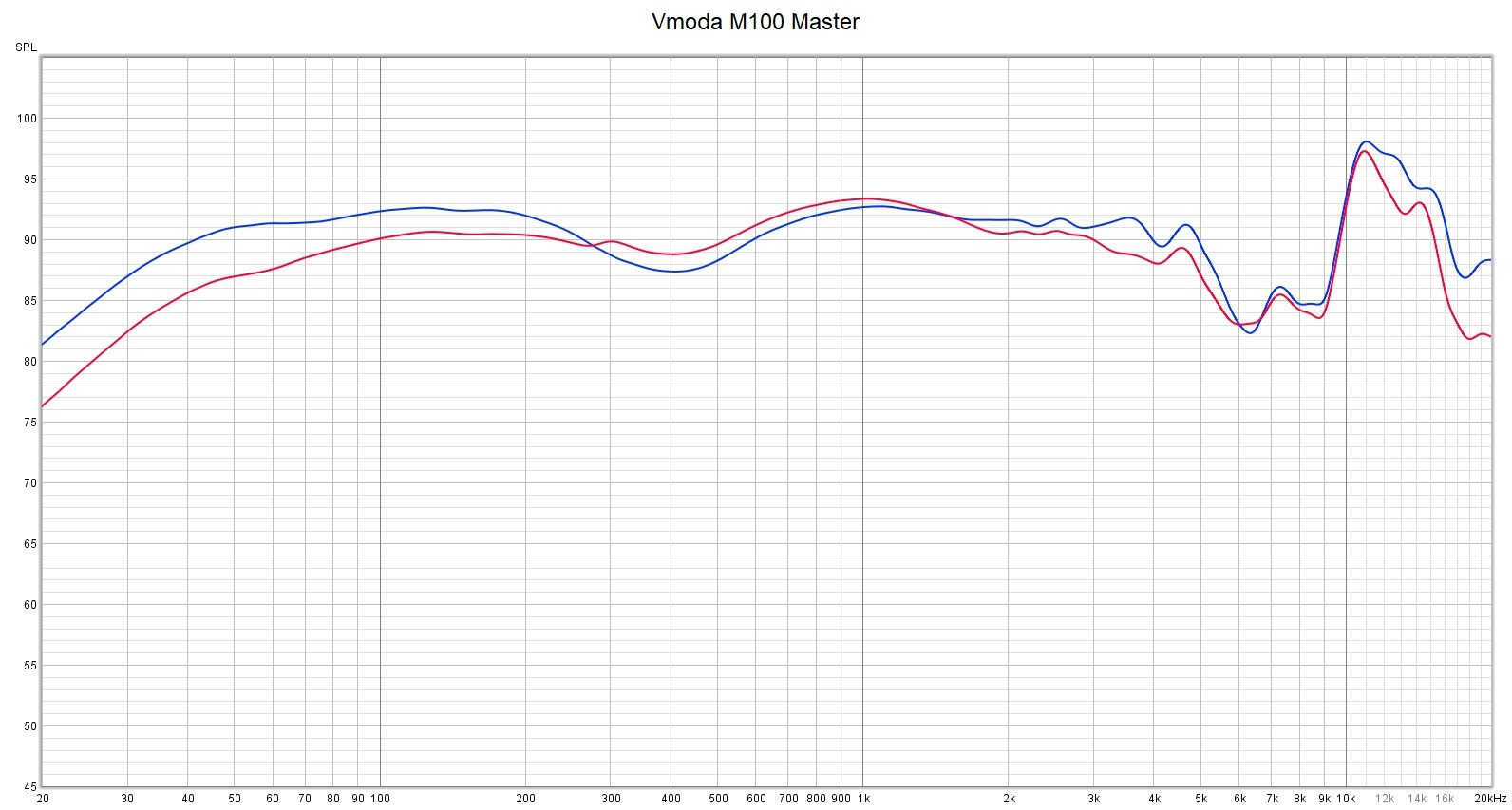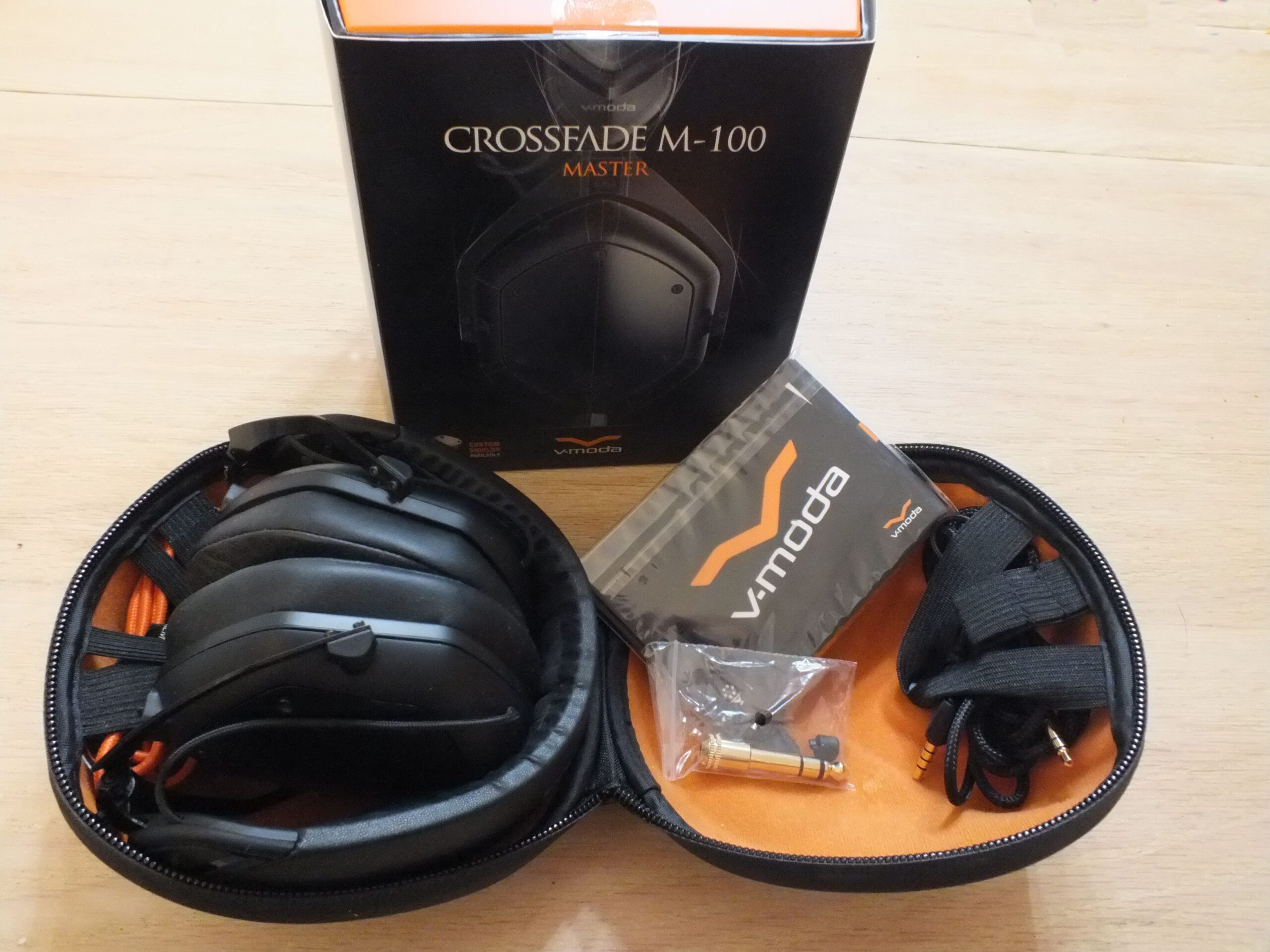V-moda Crossfade M100 Master
disclaimer: V-Moda was kind enough to send the M100 Master for purposes of review and feedback. Once complete, the sample was returned to V-Moda and I received no compensation or instructions as regards the content of this page. If you have an interest in V-Moda products in general or the M100 Master specifically, see their website or Facebook page. You can also purchase and customize the face plates of your V-Moda product directly from their website.
Unboxing / Packaging:
Unboxing the M100 master is a more upscale experience than many. I’ve done so many of these that I get to the point of “yep, its a box” and struggle for what to write here most of the time. The packaging is unique with a hexagonal box with information on every panel and a leather snap closure at top that sets it apart from anything I have received in recent memory. Opening the top flap reveals the manual and a pad that protects the contents. Lifting out the pad reveals a clam shell case (and in this case it really does look like a clam) with all of the rest of the kit hiding inside. The kit includes the headphones, two cables, and a 6.3mm to 3.5mm adapter. The cables tuck neatly into two elastic compartments which keeps the jacks from scratching the face plates (another nice touch). If I had one complaint here, it would be nice if the clam shell had a handle on it as the case itself is large enough to be uncomfortable to grasp for long periods and the carabiner is too small to get more than 2 fingers through. A minor point for sure, but good to know going in as these are a travel oriented purchase for many.
Build/Fit:
These are mostly metal with very little plastic to be found (the cups are polymer but are quite tough) and none in the critical high-stress areas. Hinges and headband adjustments are all metal and very positive in function. Face plates are metal and fully customizable with options of sending V-moda your own artwork to have put on the plates for a truly bespoke look. These are a small headphone and sit right on the border between over ears and on-ears for me. My ears do fit inside the pads but only barely. These are slightly smaller on my head than something like the Sony WH-1000 series or ATH-MSR7b. While many headphones have gotten a reputation for being fragile, the M100 Master most certainly is not. I think I might be able to run-over the M100 Master with a truck and have it survive. Initial clamping force is typical of products targeting the travel market as well as it is high enough to keep the M100 Master from moving during exercise. These are not listed as waterproof so gym use is probably not a great idea, but wear during travel while running between gates at the airport should be fine. The M100 Master comes with a 2 year warranty a 60 day return if you don’t love it policy, and with V-Moda’s “immortal life program” repairs outside or warranty are discounted or discounts on replacements offered if your existing set is beyond repair. The cups have a port for the cable on both cups with a plug in the right cup by default. With some effort this plug is twisted to unlock then pulled straight out to reveal the 3.5mm port. This system allows for use of 2 sources for DJ work (per V-moda) or swapping cable sides for those who prefer right side mic. A spare plug is included in the kit should one get misplaced. I found these to be comfortable for long wear once I had adjusted the clamping force slightly (the headband is all steel and can be bent to adjust force) but they do get a little warm as they seal well and have little airflow as a result.
Internals:
The heart of the M100 Master is a 50mm dual-diaphragm dynamic driver with a nominal impedance of 32Ω and a listed sensitivity of 107dB/mW @1kHz. While the impedance is higher than many in-ears, the sensitivity is high enough that it makes the M100 Master easy to drive and use from a phone or tablet. I found the LG phone (particularly if forced to high output) was more than adequate and any of the common dongles should work well for lower powered phones and tablets. The M100 Master does scale well though so having some additional power does help tighten the lows a bit and the amount of detail presented improves with improvement in input quality as well. I found the Cayin N3 Pro to be a very good match with the M100 Master and the ultra-linear tube mode is a nice compromise between clean and a little of that tube warmth that makes a sound signature more engaging.
Cable:
The M100 Master comes with 2 cables and V-moda offers several more for specific purposes. The two in the bundle are what V-Moda calls the SpeakEasy, an orange travel cable with a microphone built in and a separate single button remote lower on the wire, and a SharePlay cable that splits and provides a 3.5mm female jack to allow attaching a second headphone if desired. Construction of both cables is similar with a cloth wrapper around the length of the cable and molded housings for the jacks with good strain relief. It should be noted that both cables use a TRRS jack at the source end and a TRS at the headphone end and proper orientation is required for these to work properly. I like the design of the speakeasy that splits the microphone out from the remote as too often either the mic is too low or the remote is too high and awkward to use as a result. This design puts the microphone about chin level and the remote about 6 inches below that for easy reach. Kudos to V-moda on a smart design. The mic is somewhat sensitive to wind and movement during conversations but call quality was quite good. The SharePlay cable is also well thought out as the female jack has a clip on the back of its housing for attaching to the main cable so it doesn’t flop around when not in use. For those who simply won’t use or don’t want the sharing option an audio only cable with none of the extras is also an option at time of purchase. It is also noteworthy that the M100 master uses a single sided cable attachment but offers connectors on both cups so the end user can select left or right side entry and mic placements. This also allows for attaching 2 sources (per V-moda rep) or conversion to a balanced cable although to be properly balanced one would likely need to cut the cable between the cups. At any rate it is a fairly simple process to convert to balanced if desired.
A Coilrpro extended cable for DJ use, a lightning cable that incorporates a dac/amp for use with Apple products, the previously mentioned audio only cable, and the BoomPro cable that offers a boom mic for gamers are also available with prices ranging from $12 (audio only) to $100 (lightning) but not included with the package.
Sound:
The FR Chart was done with the Mini-DSP ears measurement rig using the RAW calibration and honestly should be taken with a large grain of salt as the seal between the headphone and ears was tenuous at best. I suspect with a proper seal the low end of the graph would look much more like my listening notes suggest.
Bass:
I was expecting something like the original m100 in my collection and was pleasantly surprised here. Bass depth is still a bit limited as roll-off becomes notable in the low 40Hz range but above that point the Master is much cleaner than its predecessor with better speed on attack and decay and good rumble without becoming thick or muddy. Mid-bass has a very slight emphasis but again is better textured than the original with more detail and a much cleaner sound. While these probably won’t make the basshead crowd as happy as the originals did, for those of us that like a more controlled and linear bass, these go a long way toward delivering it.
Mids:
Lower mids do have a touch of mid-bass bleed and lend some warmth and weight to the sound. The M100 Master could very easily be thought of as mid-centric as it has good detail in the lower mids despite the bleed, with male vocals having both good clarity and enough weight to sound natural. Guitar growl is good if just a touch soft and strings have a nice tonality here as well. The warmth takes a touch away from the realism of strings but adds it to brass in the process so ensemble pieces are well suited to the M100 Master. Upper-mids are on the same plane so female vocals stand equal to their male counterparts. The M100 Master is a good choice for choral pieces as a result as vocals are not segregated by pitch giving the m100 a voice much more like a live stage in that respect.
Treble:
Lower treble exists on the same plane with the mids and has good energy without jumping out or causing undo glare. Detail is quite good as well which gives the M100 Master a polite voice without any hint of stridency. This combined with the warmth of the lower mids gives the M100 Master an overall warm feel to the signature. True treble has good energy and contributes to snare rattle sounding nearly realistic and cymbals as well. High-hat could use a touch more energy to sound 100% but its closer than I expected at $249
Soundstage / Imaging:
Stage is better than expected for a closed back with little space between the ear and driver as it has good width and depth with some height as well. It certainly isnt HD800 sized, but it is no slouch either and into territory usually reserved for open-back designs in many respects. Seating the orchestra is straight forward with good instrument separation and no odd placements. Layering is good as well with little or no tendency to compress even with busy passages. Imaging is also quite good with good precision and movements easily tracked in space.
Comparisons:
I’ve tried to select comparisons that are within $50 one way or the other of the retail of the M100 Master and also closed back as comparing to an open back model seems a bit like apples and oranges. The models I selected were the Sony MDR-1AM2, the Focal Listen, the Audio Technica ATH-MSR7, and the Meze 99 Neo as I think these are all likely candidates for those shopping for headphones in this price range.
vs Sony MDR-1AM2
These two square off as direct competitors. The 1AM2 is Sony’s portable using the trickle down tech of the Z1R in a 40mm driver. The Sony is lighter than the M100 with a bit less clamping force and a bit less isolation comparatively. Both have well tuned near neutral signatures but the 1AM2 seems to suffer at higher volumes and break up a bit with a tendency to get a bit harsh while the M100 Master seems to be able to retain its balance at higher volumes. Build quality favors the M100 Master as well.
vs Focal Listen Pro
Again, a direct competitor but less comparable in build or signature. The Listen Pro has a lot more plastic in the build and will not tolerate the level of abuse the M100 Master will shrug off. The Focal also has a bit more of a V-shape with both bass emphasis (that extends to the lower mids) and treble emphasis. This puts the Listen Pro into a different class in my opinion and maybe the names say it all in this case. The Listen Pro is for casual listening while the Master is more designed for Pros in the studio.
vs ATH-MSR7
This is a battle royale as the MSR7 has long been ATH’s entry into the mastering market and overlaps M100 Master in most ways. The build favors the M100 although the MSR7 is by no means poorly built. Signatures are similar but the MSR7 needs more power to do its best work so the biggest score for the M100 in this fight is its ability to work well from lower powered sources where the MSR will require an amp to really compete. The M100 also comes with a much more robust case for travel and has better isolation so travelers get a double benefit of less to carry and less outside noise to interrupt their enjoyment.
vs Meze 99 Neo
These two actually come closer in build quality as the Neo is mostly metal as well and extremely well made so while the Neo doesn’t fold like the M100 master, both are well built and provide good solid travel cases so should handle a few bumps and bangs along the way. Signatures are a little less parallel though as the Neo has more bass but more bass bleed as well. The M100 Master is more tightly controlled with better bass clarity if slightly less of it. Mids are good on both but again favor the M100 as detail is slightly better and clarity as well. Treble is pleasant on both and hard to pick a clear winner on that alone. I give the nod to the M100 for sound and to the Neo for comfort so users will likely want to audition both and see what matters more to them.
Thoughts / Conclusion:
I went into this review thinking I had a pretty good idea of who V-Moda was and what their house sound was and as a result I expected a fun headphone with good build quality and a V signature with a bass boost in the low end and a moderate upper-mid emphasis to match. I guess my expectations were a little dated in this case as the 2nd generation of V-Moda, or at least the M100 Master doesn’t fit that description at all. V-moda nailed the name on this one as it is well suited for mastering or studio work as it imparts little color to the sound with a near neutral signature that is departed from only to add a bit of warmth to the overall. Detail is quite good and textures are way better than earlier models I have tried. The M100 master shows a commitment from V-Moda to move into the professional space rather than being content with selling in the consumer market as this is a tuning that will appeal to DJs, engineers, and performers in addition to audiophiles looking for a travel headphone. It would also make a great first serious headphone for young people who may not yet understand how to properly care for their gear as the M100 Master in typical V-moda fashion is designed to take the bumps and bangs of life along the way. I can say without reservation I recommend the M100 master as I can find very few things not to like and the price tag of $249 puts it as one of the more accessible offerings with this much going for it.
-
Bass - 7.5/107.5/10
-
Mids - 7.5/107.5/10
-
Treble - 7.5/107.5/10
-
Soundstage - 7/107/10
-
Imaging - 7.5/107.5/10
Summary
Pros: Tank tough, near neutral signature, great kit, good isolation
Cons: Small cups may bother some, tight fit may fight with glasses, no active noise cancellation









